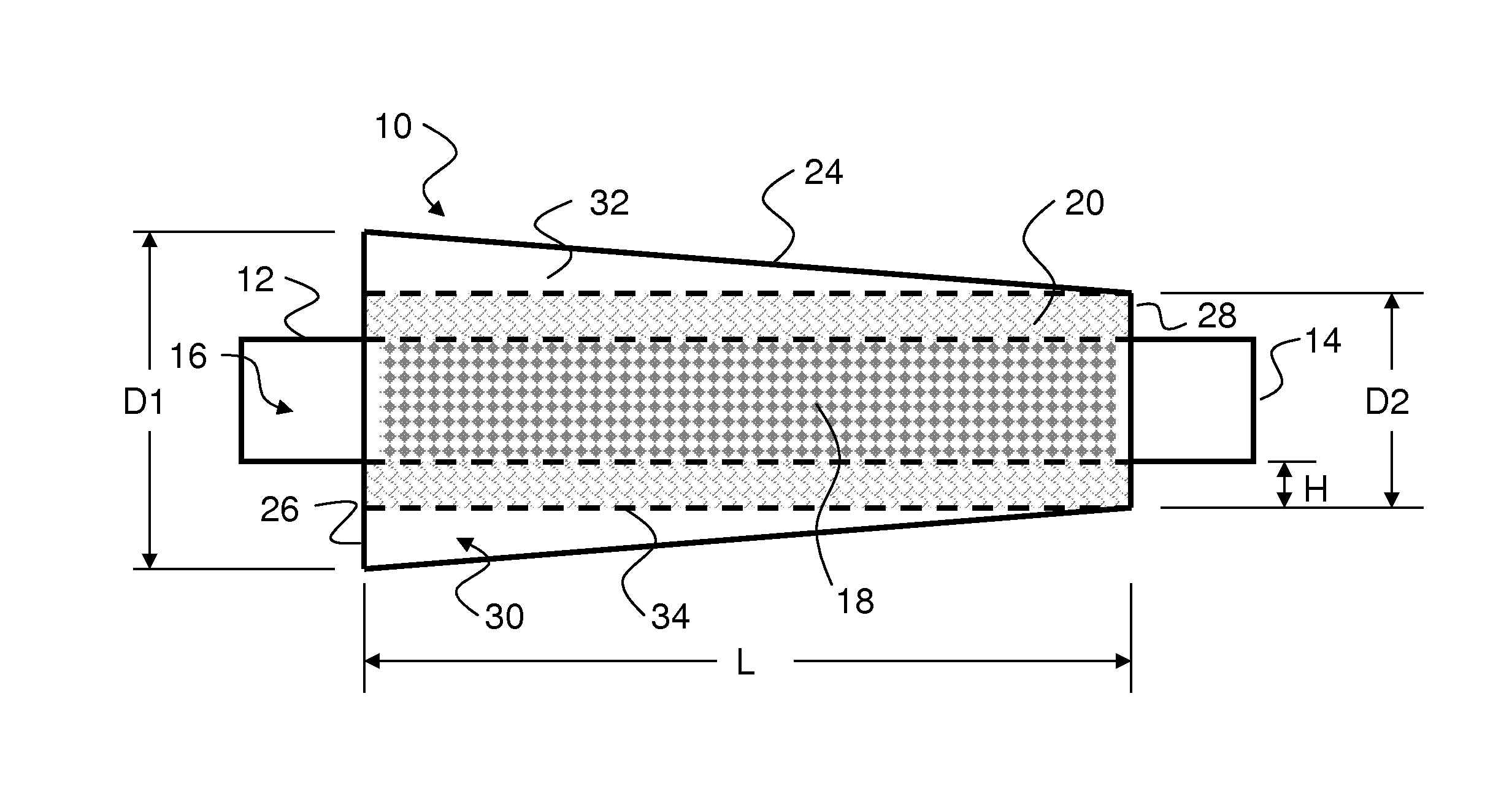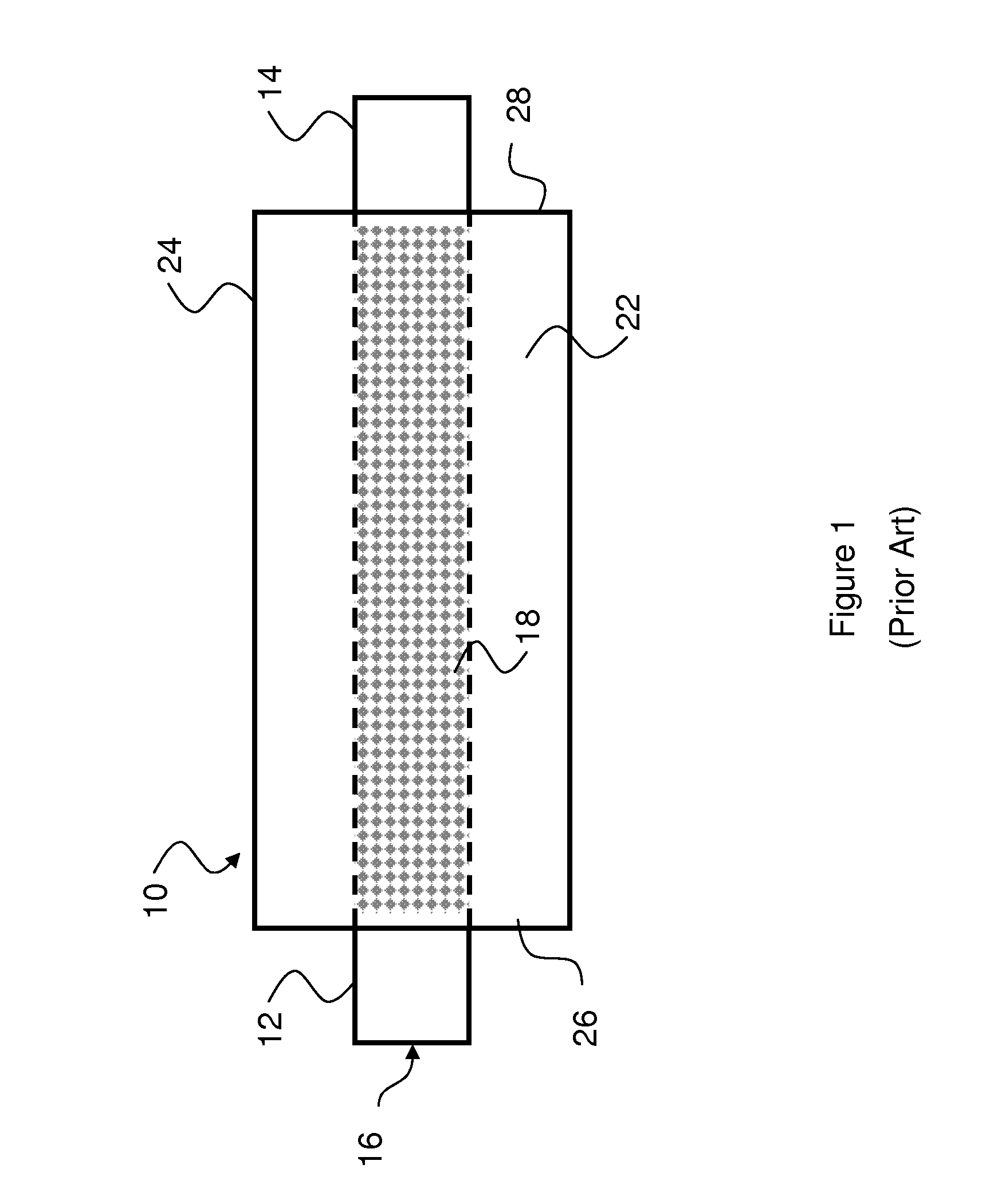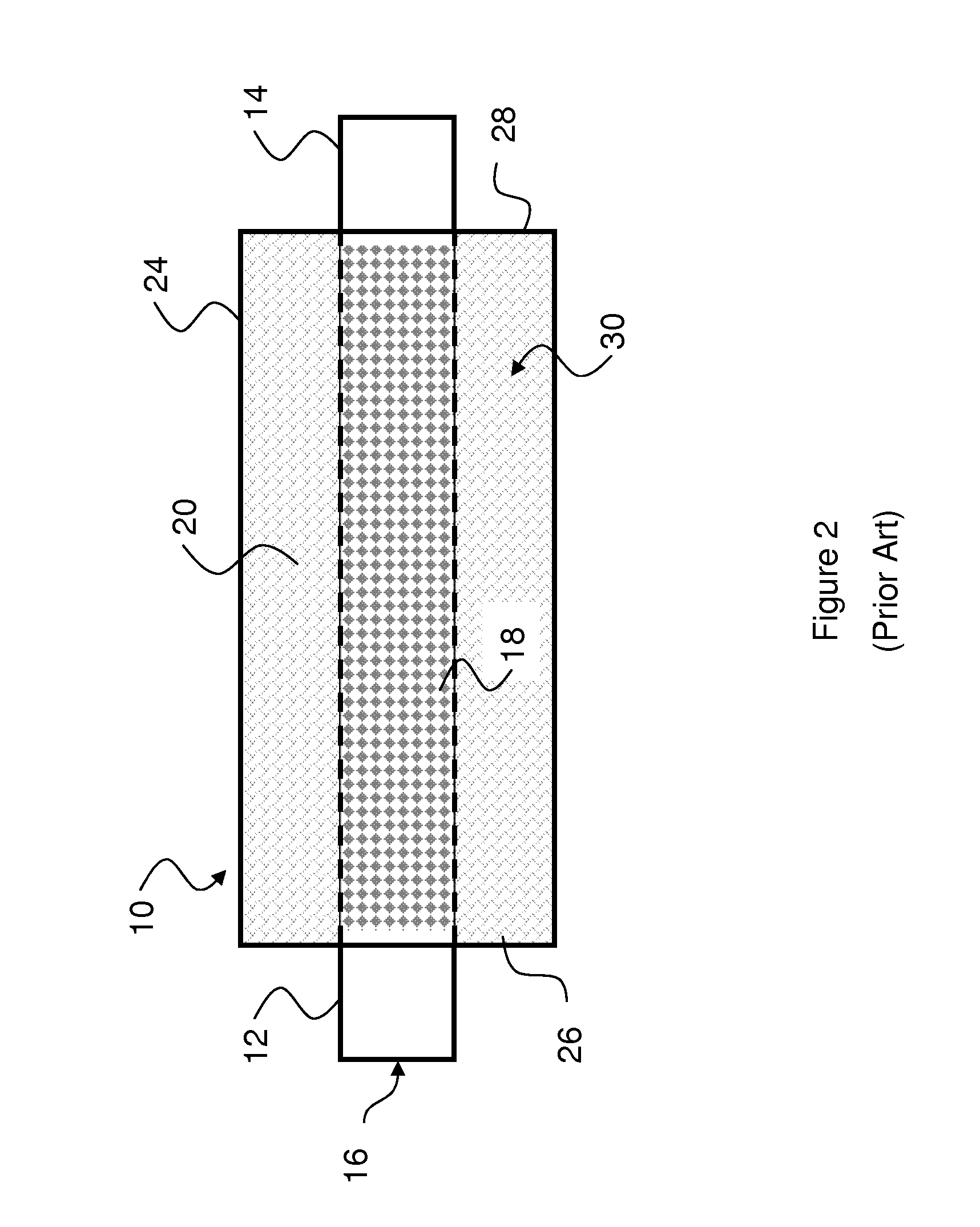Exhaust sound attenuation device and method of use
a technology of exhaust sound and attenuation device, which is applied in the direction of sound absorption, gas passage, gas chamber, etc., can solve the problems of limited noise reduction capability, adversely affecting the operation efficiency of the device, and mufflers that create substantial back pressure or do not adequately reduce the sounds, etc., to achieve sufficient low density of material and reduce low frequency sound
- Summary
- Abstract
- Description
- Claims
- Application Information
AI Technical Summary
Benefits of technology
Problems solved by technology
Method used
Image
Examples
example 1
[0026]A 175.25″ long straight pipe was used to define the target resonant frequencies with values that are realistic for an automobile application. A speaker source was used to insert white noise at the inlet end of the pipe. Sound measurements were made at the pipe exit to compare the acoustic spectra with and without a muffler, defined as “insertion loss”. The exhaust pipe is 2.5″ in diameter. The front (inlet) of the mufflers is located 113.25″ from the speaker flange. The muffler designated “Muffler 10A” contains Owen-Corning Advantex 162A fiber bulk absorber material with a bulk density of 0.15 g / cm3 for sound dissipation. The dissipation material fills the volume between the outer perforated pipe 34 and the perforated through pipe 16. The muffler designated “Muffler 10B” does not have the dissipative layer, but does contain the perforated pipes 34, 16.
[0027]Narrowband sound pressure level (SPL) spectra were measured for two frequency ranges, 0 to 1250 Hz (FIG. 5) and 0 to 10 k...
example 2
[0028]Another advantage to the frusto-conical resonant chamber is the ability to control the low frequency system resonance that occurs with a resonator near the tailpipe. A 179.75″ straight pipe was used as a comparison for this test. The mufflers were mounted near the end of the straight pipe, with the rear of the muffler located 15″ from the tailpipe exit. FIG. 7 shows the sound spectra from 0 to 300 Hz measured at the end of a straight pipe (solid black) compared to the spectra from three different mufflers: an expansion chamber partially filled with dissipation (Muffler 9A, bold dotted line); a converging muffler (Muffler 10A, light solid line); and a diverging muffler by switching the direction of Muffler 10A (light dotted line). Notice the tone that is measured near 40 Hz for Muffler 9A that was not present for the straight pipe data. This is the low frequency system resonance that occurs due to the interaction of the resonator (expansion chamber) with the tailpipe. When eith...
PUM
| Property | Measurement | Unit |
|---|---|---|
| frequency | aaaaa | aaaaa |
| density | aaaaa | aaaaa |
| density | aaaaa | aaaaa |
Abstract
Description
Claims
Application Information
 Login to View More
Login to View More - R&D
- Intellectual Property
- Life Sciences
- Materials
- Tech Scout
- Unparalleled Data Quality
- Higher Quality Content
- 60% Fewer Hallucinations
Browse by: Latest US Patents, China's latest patents, Technical Efficacy Thesaurus, Application Domain, Technology Topic, Popular Technical Reports.
© 2025 PatSnap. All rights reserved.Legal|Privacy policy|Modern Slavery Act Transparency Statement|Sitemap|About US| Contact US: help@patsnap.com



